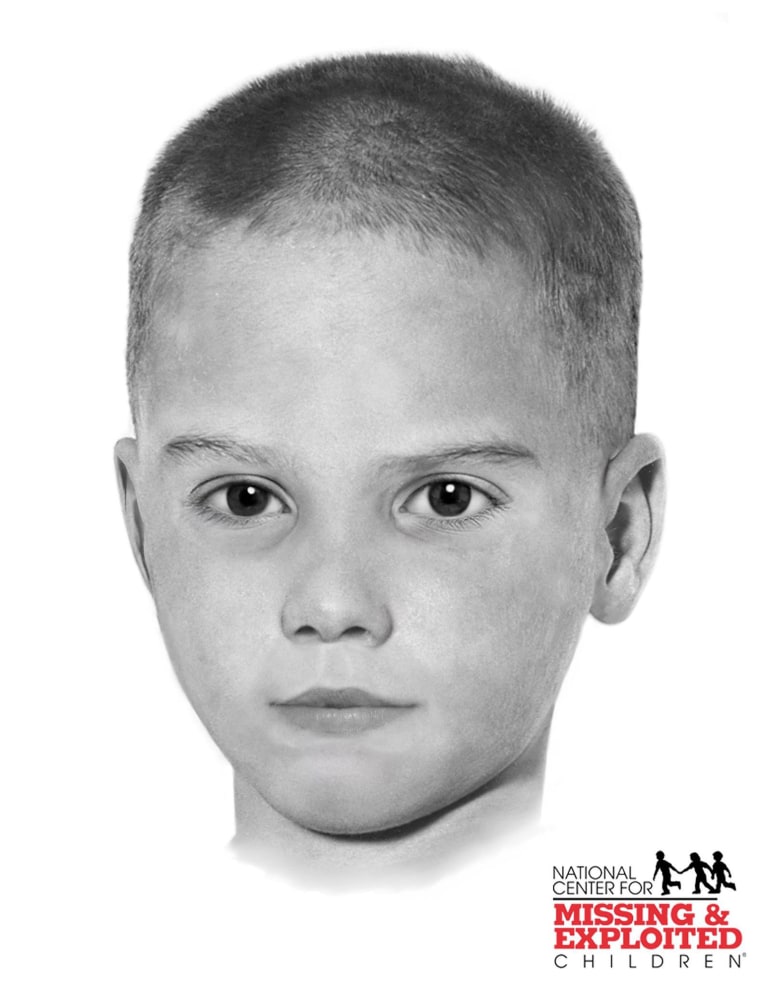Philadelphia police on Thursday identified the “Boy in the Box” who was found beaten to death in 1957 — but said proving who killed 4-year-old Joseph Augustus Zarelli will be an “uphill battle.”
Detectives have found the family and know who the boy's now-deceased parents are, but they stopped short of disclosing who they believe is responsible for his death, authorities said.
The child lived in West Philadelphia, near Market and 61st streets, Philadelphia Police Capt. Jason Smith said. The case remains open, and police still hope to someday pin the murder on a suspect — but Smith tamped down expectations.
"It’s going to be an uphill battle for us to definitively determine who caused this child's death," Smith told reporters.
"If this technology had been available to us 20 years ago, it might be a completely different story — because once you identify who the child is, you start [interviewing] family members. Well, at this point of time, a lot of the family members who would have been old enough to have a memory of any incident that might have occurred are normally long gone."
Hopes for 'avalanche of tips'
The boy was born on Jan. 13, 1953.
Police declined to reveal any details about the victim's family or even characterize the reaction of Joseph's loved ones when detectives told them about their findings.
“Joseph has a number of siblings … who are living, and it is out of respect for them that their parents’ information remain confidential,” Smith said.
“Do we know who is responsible for Joseph’s death? The answer, at this time, is unfortunately ‘no.’ We have our suspicions as to who may be responsible. But it would be irresponsible for me to share those suspicions as this remains an active and ongoing criminal investigation.”
Detectives hope the news of the boy's identification will jar someone's decades-old memories and lead to an "avalanche of tips" from the public, Smith said.
“We’re going to filter through each and every one of those tips, and in that avalanche there might be a diamond in the rough," Smith said.
"I’m hopeful that there’s somebody who is in their mid-, late 70s, perhaps 80s, who remembers that child. The child did live until a little past the age of 4 years old. So there would have been somebody out there that would have seen this child, perhaps another family member that hasn’t stepped forward, possibly a neighbor, a neighbor that remembers seeing that child, remembers whatever was occurring at that particular household.”
Boy's body found in Fox Chase neighborhood
The break in one of America's oldest cold case investigations came via recent DNA technology breakthroughs and with the assistance of volunteer sleuths who helped police narrow down the victim's possible relatives.
The body of a little boy, then believed to be 4 to 6 years old, was found wrapped in a blanket in a cardboard box in Philadelphia’s Fox Chase neighborhood on Feb. 25, 1957.
For the past 6½ decades, not only has no one ever been held to account for his slaying — but before Thursday morning, the victim's name also wasn't even known.

Generations of Philadelphians had come to know the young victim simply as the “Boy in the Box.”
The cold case warmed in recent years when volunteers with the Vidocq Society, a Philadelphia crime-solving club, extended a crucial helping hand to police.
The nonprofit society is made up of former law enforcement personnel and forensic professionals who share an interest in unsolved crimes.
Volunteer sleuths, DNA and genealogy
After years of investigation and two exhumations of the boy’s body yielded DNA samples, the genetic material made its way to the famed forensic genealogist Colleen Fitzpatrick, a Vidocq Society member.
Fitzpatrick likened the boy's remains and the available DNA to "confetti," making her task nearly impossible.
“This was the most challenging case in my whole career," Fitzpatrick told reporters. "It took 2½ years to get the DNA in shape [for proper testing] it was so bad.”
Her DNA and genealogical analysis helped develop a list of the boy’s possible relatives, thanks to publicly availably genetic records. Police then were able to find Joseph's family and even his birth certificate.
"You get a list of matches that are related to the boy and basically if they're related to him, they're related to each other," Fitzpatrick told NBC Philadelphia on Thursday.
“So what we do is we take those people, and it’s like a big Sudoku puzzle where you move them around, and you use tools, and finally you get a consistent picture of who is related to who, and it all fits together, and the one spot that’s missing is the one person you’re trying to identify.”
Fitzpatrick added: “There is no question it is Joseph Augustus Zarelli. No question.”
He's "no longer that 'Boy in the Box.'"
Bill Fleisher, a co-founder of the Vidocq Society, said he has been giving great thought in recent days to police investigators who worked the case over the decades — but died before Thursday's announcement.
“I feel their souls are standing here at this moment with us," said Fleisher, a former Philadelphia police officer and FBI agent.
"Now our lad is no longer that 'Boy in the Box.' He has a name. I was raised to believe that when you say the name out loud … that person still lives in spirit amongst us.”
Remains of the “Boy in the Box” rest at Ivy Hill Cemetery with a headstone identifying him as “America’s Unknown Child.”
The headstone will soon be changed to add his name.
"Joseph Augustus Zarelli will no longer be that 'Boy in the Box,' will no longer be unknown," Fleisher said.
